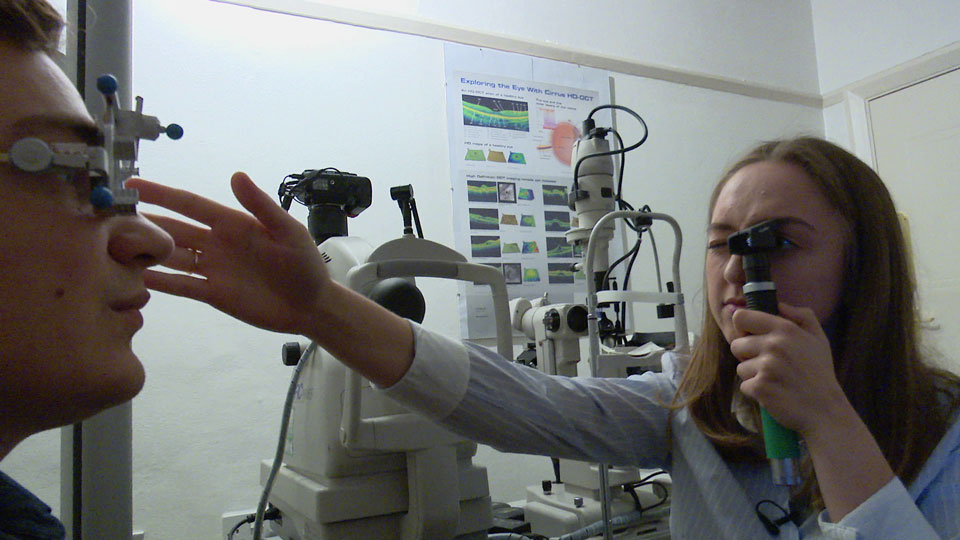- OT
- Life in practice
- Career development
- Getting comfortable with contacts
The discussion
Getting comfortable with contacts
OT speaks to three optometrists about how they became comfortable fitting and offering contact lenses to patients when they were newly-qualified

02 June 2019
‘Is it better with one or two?’ This is a phrase that newly-qualified optometrists will have become familiar with upon qualification, having successfully navigated the pre-reg period and in doing so performed the 350 refractions that are required as part of the Scheme for Registration.
Once a prescription is determined, the patient has a plethora of vision correction options available to them, one of which is contact lenses.
Contact communication
Early in their career, some optometrists may find raising the topic of contact lenses with patients nerve-wracking because, in comparison to the number of refractions they have performed, their contact lens experience can feel limited.
Optometrist Josie Evans has been qualified for one year and works in independent practice at Linklaters Optometrists. She admitted that despite having met the minimum of 20 contact lens fits required by the Scheme for Registration, when it came to her first fit as a newly-qualified optometrist, she was “slightly apprehensive.”
“I felt I knew the basics and how to manage general contact lens complications, but I quickly realised that most of the time, patients only come into practice when they have other issues, such as dryness or discomfort,” she said.

With limited experience in resolving these types of issues during training, Ms Evans said: “I found these situations quite challenging at first.”
In order to expand her skillset, Ms Evans began fitting colleagues in practice, a method that she still finds useful when a new lens comes onto the market.
Despite initial apprehensions, Ms Evans never allowed this to stop her raising contact lenses as an option with patients as she knew that the more experience she gained, the more comfortable she would become.
“It’s really important to jump right in because, as with most things, it’s about getting as much practice as possible,” she encouraged.
Josie’s top tips
- Invite patients to share their thoughts on contact lenses during the sight test
- Open up the opportunity of contact lenses to everybody – they are suitable for a large range of patients so don’t restrict them to who you feel comfortable fitting
- Put a lens in a patient’s eye for them to try while they are selecting glasses.
When optometrist Jasmine Smith, who works at Aves Optometrists, first qualified, she recalls being “quite nervous” before one of her first contact lens fits, which happened to be for her boss.
“I was mainly concerned about putting the lens in and removing it because I didn’t have a lot of practice and I was expecting to be a little shaky,” she told OT. Ms Smith explained that her confidence did grow over time. “The more I got to see different types of contact lens patients and discussed different scenarios, the more my scope of practice expanded and my confidence grew,” she said.

Raising it
For some newly-qualified optometrists, a concern about raising contact lenses with patients is that it can feel like “sales talk.”
BBR Optometry optometrist Laura Williams, who qualified in July 2014 and was named Young Contact Lens Practitioner of the Year by the BCLA last year, recalled initially having reservations about when and how to raise contact lenses with patients.
Having completed a Masters in Optometry at the University of Manchester and splitting her placement year between Manchester Royal Eye Hospital and BBR Optometry, she felt prepared clinically when her first contact lens appointment appeared in her diary.
Yet as a newly-qualified optometrist, Ms Williams said she had a lot to remember during the eye examination and consequently was guilty of not always raising contact lenses with a patient. “It was one of many things on my to-do list and I didn’t want the way I raised it to sound like a hard sale,” she said.
Today, Ms Williams has found that the most effective way of speaking to her patients about contact lenses is to work it into the conversation while she is, for example, cleaning down a piece of equipment. “Having an informal chat about them in this way seems to work best for me,” she said.
Jasmine’s top tips
- Even if a patient is happy with spectacles, always mention that contact lenses are an option too – they could be waiting for you to raise it
- Be careful not to make the conversation sound rehearsed
- It can be easy to focus on ocular health and forget about contact lenses so try to build it into your routine.
Options aplenty
With a large number of different types of contact lenses on the market, all three optometrists said they initially found the options available to them overwhelming.
“Due to the number of contact lenses that are available, I didn’t necessarily always know which one to go for,” Ms Williams explained. “I wanted to pick the best one for each patient, but because there were so many options, I felt a slight nervousness that I might not be doing what was exactly right for them,” she added.
Ms Smith concurred. To remedy this, Ms Smith shared: “I spent a really long time looking at the ACLM Contact Lens Manual and researched the practice’s contact lens trial bank until I understood the difference between all of the lenses that I was recommending.”
The optometrist also found memorising a list of common lenses and their characteristics useful. “This really helped me during my first few months,” she said.
Similarly, Ms Williams expanded her knowledge through education. She found listening to academics and researchers talk and share advice at conferences such as the BCLA Clinical Conference “invaluable.”
She also found speaking to lens representatives, as well as technical support, particularly useful.

Managing expectations
Over the last year as Ms Evans has honed her routine in the testing room, she has realised the importance of managing patient expectations around contact lenses. “It is useful to always explain to a patient at the beginning of a new contact lens fit that they may need to try a few lenses before we identify the most suitable one for them,” she explained.
Managing patient expectations in this manner enables Ms Evans to ensure that both she and her patients take the time to make sure they are happy with a lens.
One year on, having practised and developed her own routine in the testing room, Ms Evans told OT: “Now, I have more experience and knowledge and am able to step back, ask questions and resolve a problem.”
Ms Evans highlighted that it is important for newly-qualified optometrists to be comfortable with contact lenses because they are an important part of an optometrist’s armoury. “They are a real asset to the profession because they can make such a huge improvement to a patient’s quality of life,” she said.
Laura’s top tips
- Raise contact lenses with everybody – age is just a number
- Never presume and limit a patient’s options. Discuss all of the different lenses available to them and the different price points and let them decide
- Be positive and enthusiastic.
Image credit: Getty
Advertisement


Comments (0)
You must be logged in to join the discussion. Log in